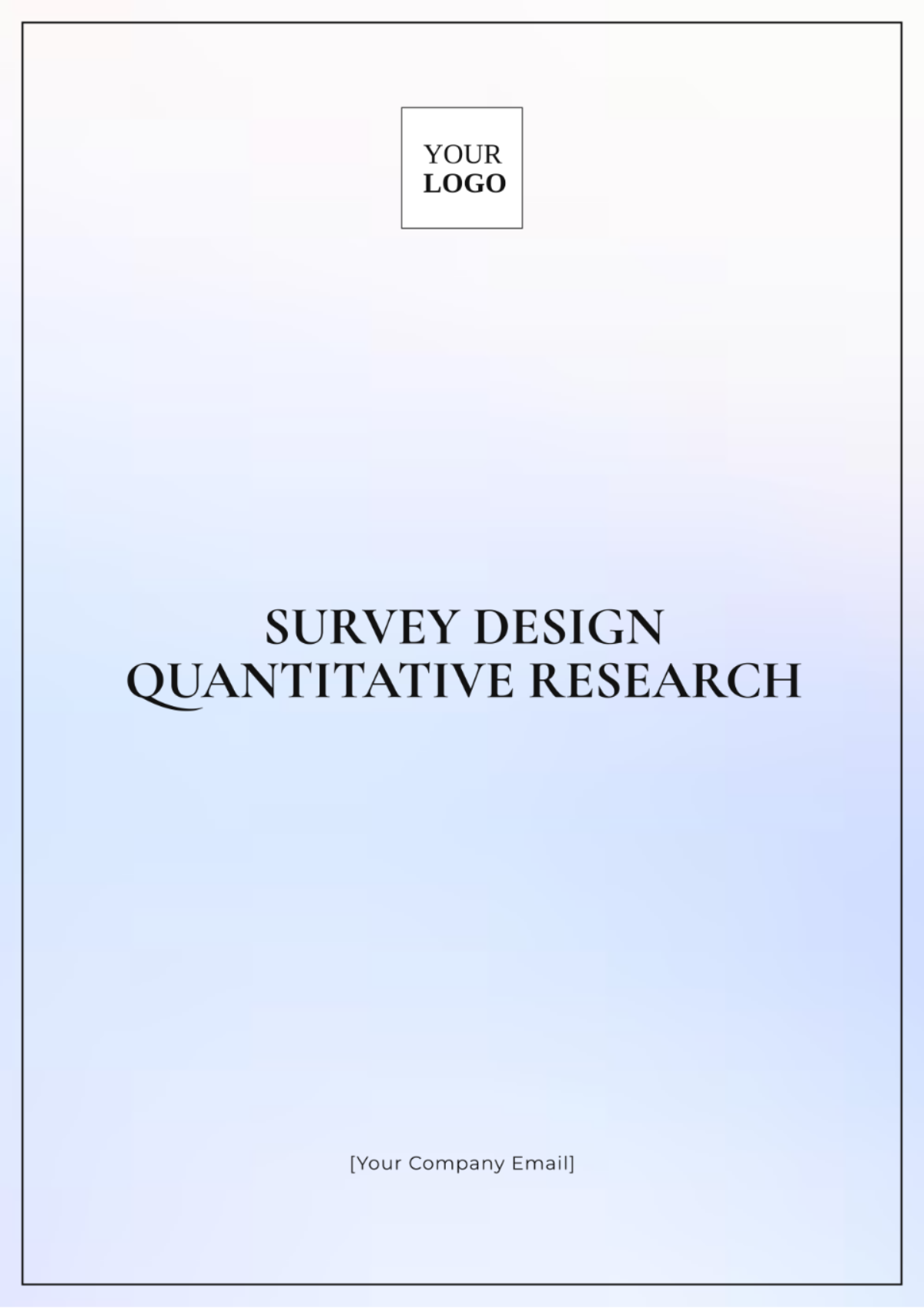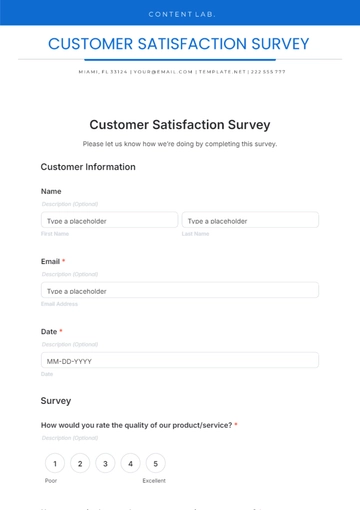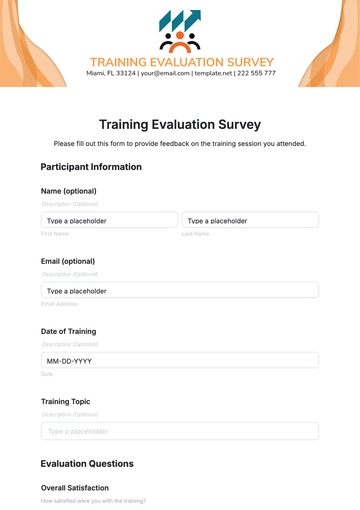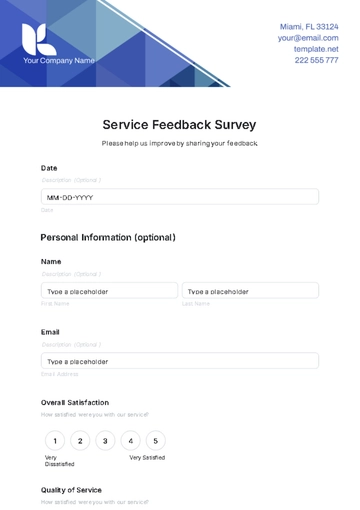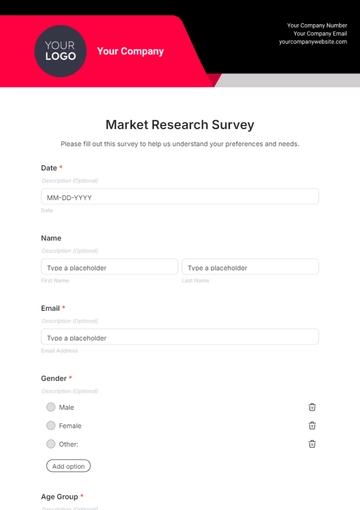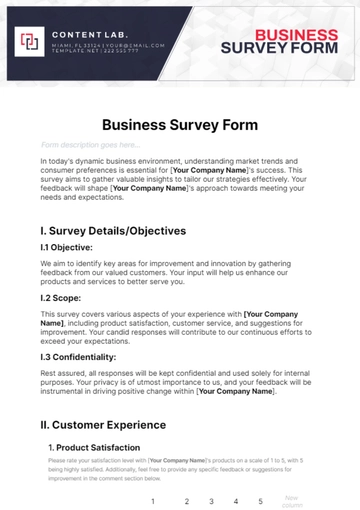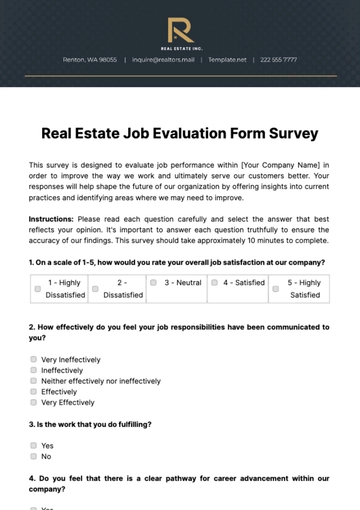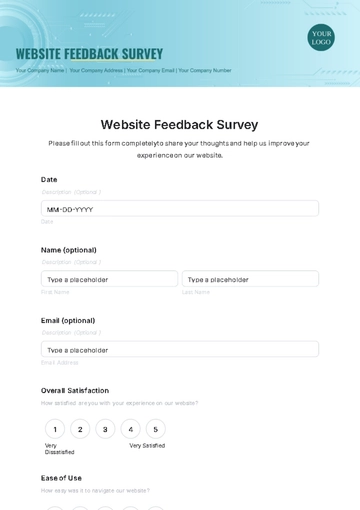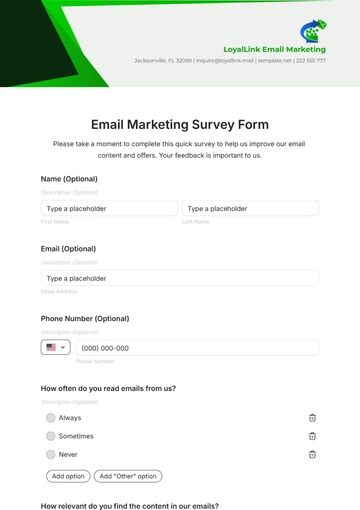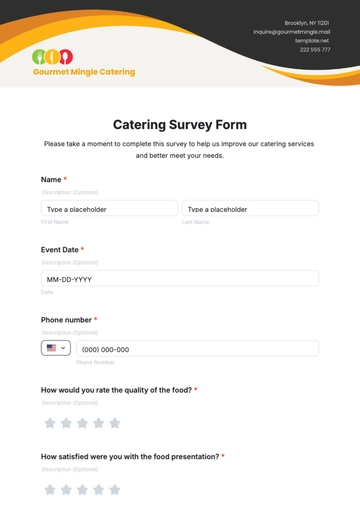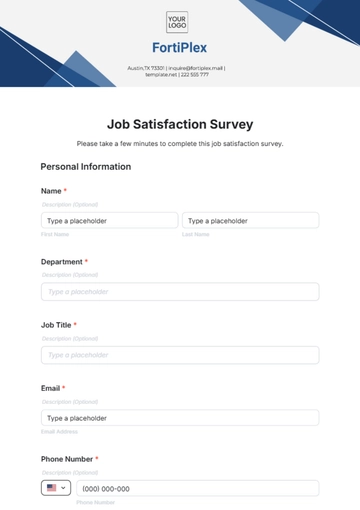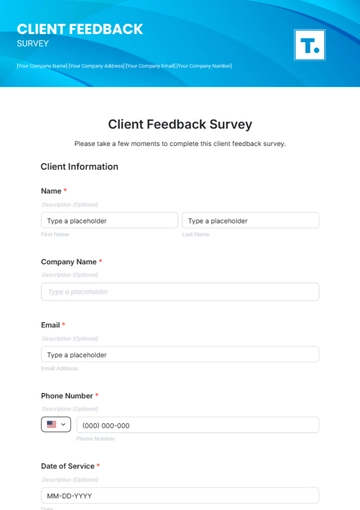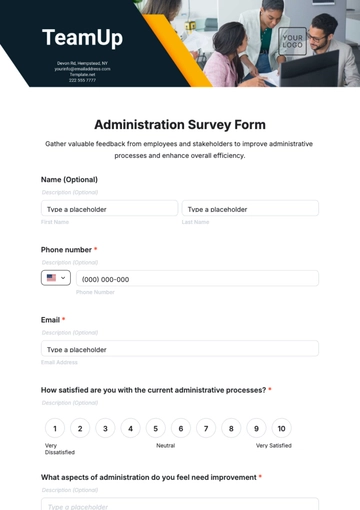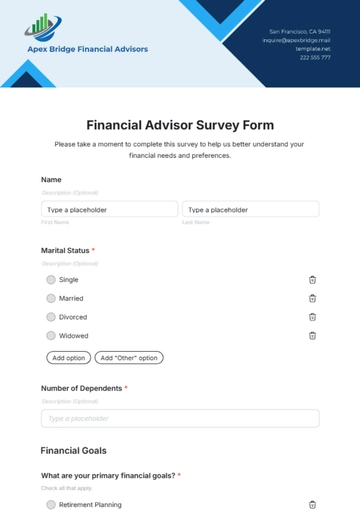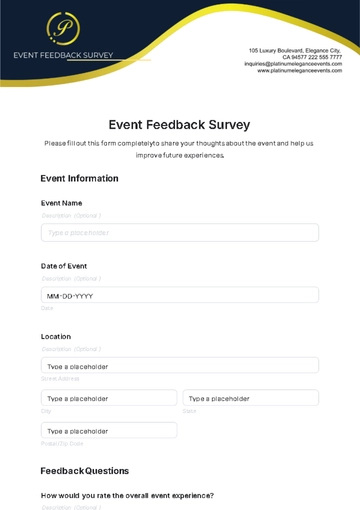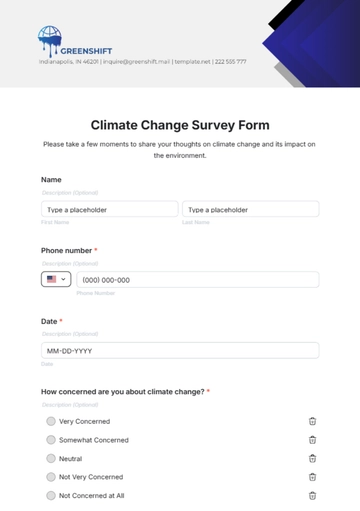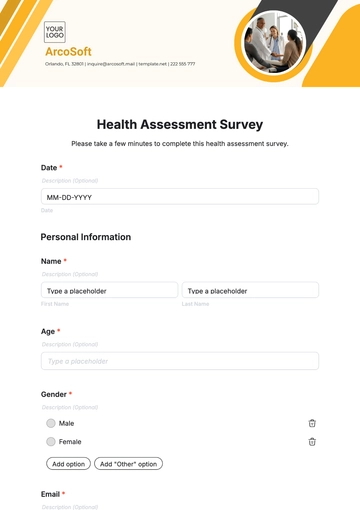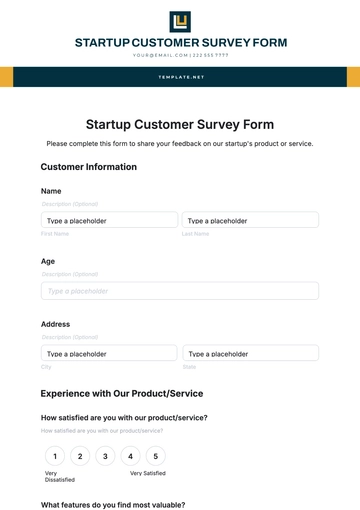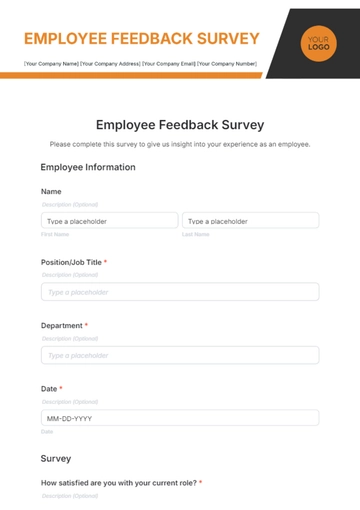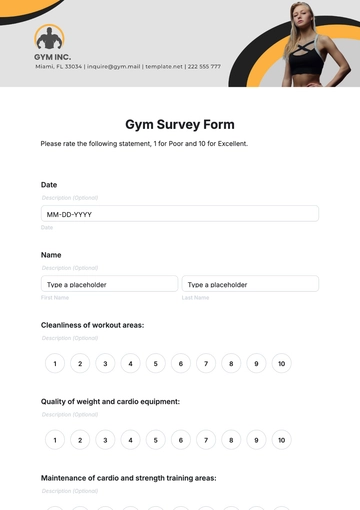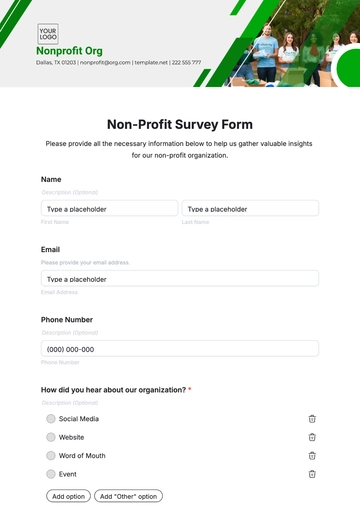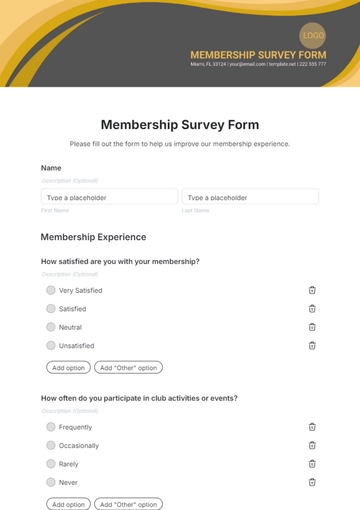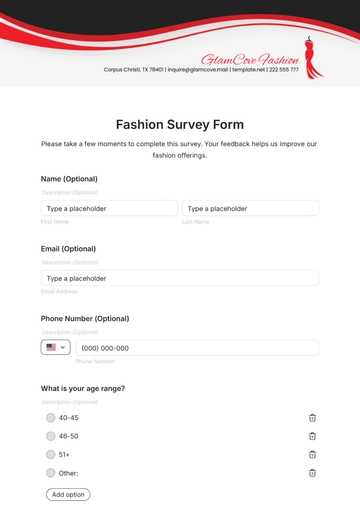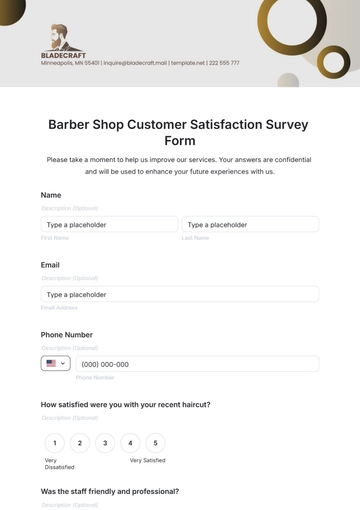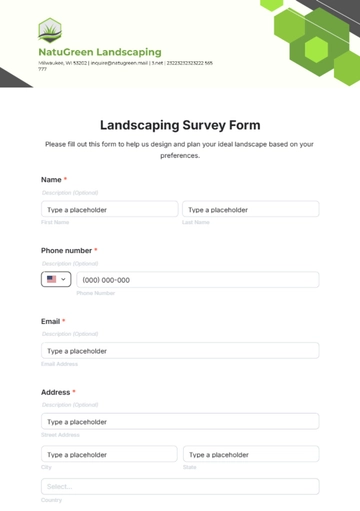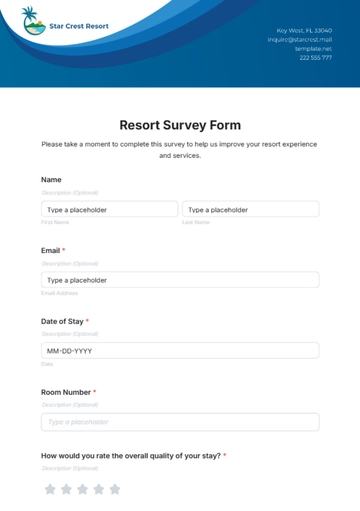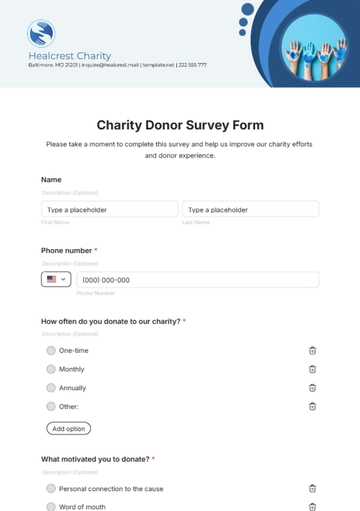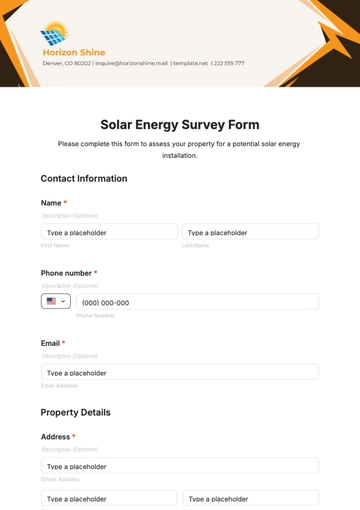Survey Design Quantitative Research
Prepared By: [YOUR NAME]
Date: [DATE]
I. Introduction
The primary aim of conducting this survey is to thoroughly evaluate the levels of satisfaction and engagement among employees within our organization. By gaining a deeper understanding of these critical factors, we can take informed steps to enhance workplace conditions, bolster employee morale, and ultimately increase overall productivity. Therefore, we highly value and depend on your participation in this survey. Please be assured that every response you provide will be treated with the utmost confidentiality.
II. Methodology
III. Questionnaire/Survey Instrument
Instruction: Please select the response that best represents your opinion for each question.
Category | Question | Response Options |
|---|
Overall Satisfaction | How satisfied are you with your current job role? | [ ] Dissatisfied [ ] Neutral [ ] Satisfied |
Work Environment | How would you rate the overall work environment in terms of comfort and safety? | [ ] Poor [ ] Neutral [ ] Good |
Management Support | How supportive do you find your direct supervisor in your professional development? | [ ] Unsupportive [ ] Neutral [ ] Supportive |
Career Growth | To what extent do you feel there are opportunities for career advancement within the company? | [ ] Few Opportunities [ ] Neutral [ ] Many Opportunities |
Work-Life Balance | How well do you think the company supports work-life balance? | [ ] Poorly [ ] Neutral [ ] Well |
Communication | How effective do you find internal communication within the company? | [ ] Ineffective [ ] Neutral [ ] Effective |
IV. Data Analysis Plan
A. Data Cleaning
Response Validation: Review all survey responses for completeness. Exclude responses that are either incomplete or duplicated.
Data Entry Verification: Cross-check data entries to ensure accuracy. This involves verifying that each entry aligns with the intended survey format and coding.
B. Descriptive Statistics
C. Comparative Analysis
D. Correlation Analysis
Pearson Correlation Coefficients: Calculate Pearson correlation coefficients to explore the relationships between overall satisfaction scores and various factors such as career growth opportunities, work environment, and management support.
E. Advanced Analysis (Optional)
Regression Analysis: Conduct multiple regression analysis to understand the impact of several independent variables (e.g., work environment, management support) on overall satisfaction. This helps identify which factors most significantly affect employee satisfaction.
F. Reporting and Visualization
Summary Report: Prepare a comprehensive report summarizing the results, including descriptive statistics, comparative analysis, correlation findings, and any significant patterns or insights.
V. Ethical Considerations
VI. Results and Discussion
A. Discussion of Key Findings
Work-Life Balance: With a mean rating of 3.9, most employees view work-life balance positively, though some feel unsupported. Efforts should be made to better support work-life balance for all employees.
B. Actionable Recommendations
VII. References
Diener, E., & Seligman, M. E. P. (2050). "Beyond Money: Toward an Economy of Well-Being." Psychological Science, 15(1), 51-56.
Harter, J. K., Schmidt, F. L., & Hayes, T. L. (2050). "Business-Unit-Level Relationship Between Employee Satisfaction, Employee Engagement, and Business Outcomes: A Meta-Analysis." Journal of Applied Psychology, 87(2), 268-279.
Kahn, W. A. (2050). "Psychological Conditions of Personal Engagement and Disengagement at Work." Academy of Management Journal, 33(4), 692-724.
Robinson, S. P., & Judge, T. A. (2050). Organizational Behavior. 18th Edition. Pearson.
Research Templates @ Template.net
